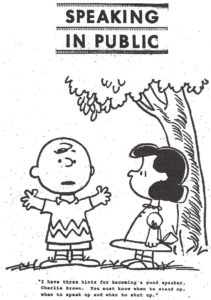 The brain is a mysterious organ. Case in point: someone’s brain decided that huge hair bows and rubber neon bracelets would be in style… and that is how the 80s happened. But I digress.
The brain is a mysterious organ. Case in point: someone’s brain decided that huge hair bows and rubber neon bracelets would be in style… and that is how the 80s happened. But I digress.
A complicated mix of factors (both internal and external) lead us to make the decisions we make. Sometimes those decisions, when viewed on the surface, make sense. Sometimes they are counterintuitive. Sometimes they are downright mysterious.
And frequently, they are really challenging. Especially when it comes to inspiring people to do something like, say, donate money or time.
Case in point: Donor decisions about supporting good causes – which organizations to support, how and to what degree. You can do all of the right things to communicate your mission to the people who matter: tell a good story and talk about the scope of your impact. And all you get in return is crickets.
Brain science to the rescue! Brain science explains how idiosyncratic the human mind can be. In creating a call-to-action for donors, focusing on the needs of a single, prototypical individual actually generates more engagement than focusing on the needs of a group. You’d think the bigger the need, the bigger the gift. But on the contrary, bigger can be bad. It immobilizes us. There’s simply something more inspiring—and motivating—about the opportunity to impact the life of a single individual…something about the number one.
Johnah Sachs touches on the concept of “human scale” as it relates to storytelling and engagement in his book Mobilizing Generation 2.0: a practical guide to using web 2.0.
Christopher Hsee, a psychological scientist at the University of Chicago, is studying this phenomenon, which he calls “scope insensitivity”. Hsee’s research highlights the effectiveness of using impact stories as tools for demonstrating results, and developing appeals based on the experiences of individual service recipients.
Brain science would tell us to keep it simple: connect one potential donor with the opportunity to help one person.
If you’re looking for examples of doing this well, check out See Your Impact. Awesome examples of the power of one!
 For any organization, the extent to which
For any organization, the extent to which  You are emotionally involved in your mission. It’s a big part of why you do what you do, right? And as much as that personal connection to mission is a motivating force, it can also work to your disadvantage. Because the people on the receiving end of your communications? They aren’t as invested in your mission. They don’t live it and breathe it every day. It’s your job to get them there. Caring begins with feeling. Your job, therefore, is to
You are emotionally involved in your mission. It’s a big part of why you do what you do, right? And as much as that personal connection to mission is a motivating force, it can also work to your disadvantage. Because the people on the receiving end of your communications? They aren’t as invested in your mission. They don’t live it and breathe it every day. It’s your job to get them there. Caring begins with feeling. Your job, therefore, is to  Let me tell you a story: there once was a hare who bragged about his speed. A tortoise grew tired of the boasting and challenged the hare to a race. Oh, you’ve heard that story before? Maybe you could recite it from memory. That’s the magic of storytelling.
Let me tell you a story: there once was a hare who bragged about his speed. A tortoise grew tired of the boasting and challenged the hare to a race. Oh, you’ve heard that story before? Maybe you could recite it from memory. That’s the magic of storytelling.
 “Impactful” is officially a word. Yep, it’s jumped from the
“Impactful” is officially a word. Yep, it’s jumped from the  I’ll skip the part where I ask if public speaking scares the bejeezus out of you. If you’re like most of the rest of the people on the planet, the answer is yes.
I’ll skip the part where I ask if public speaking scares the bejeezus out of you. If you’re like most of the rest of the people on the planet, the answer is yes. I’ve got some good news and some bad news. Which do you want first?
I’ve got some good news and some bad news. Which do you want first?
